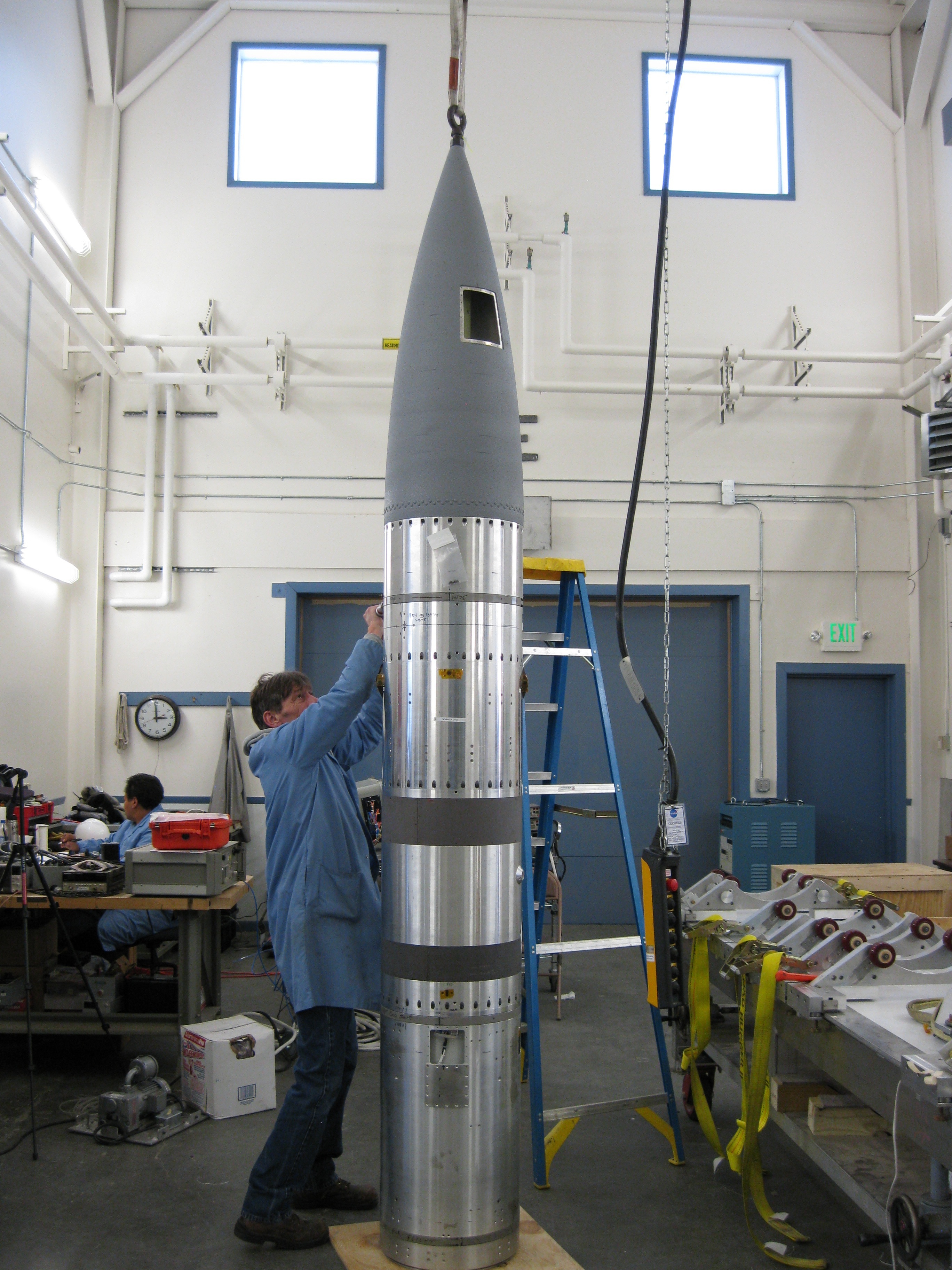A truly beautiful time lapse movie from Jason Ahrns at the Ft Yukon site, from the night of the launch.
Quick look so far on instrumentation looks good…groundbased camera data base is amazing.
19 February 2012
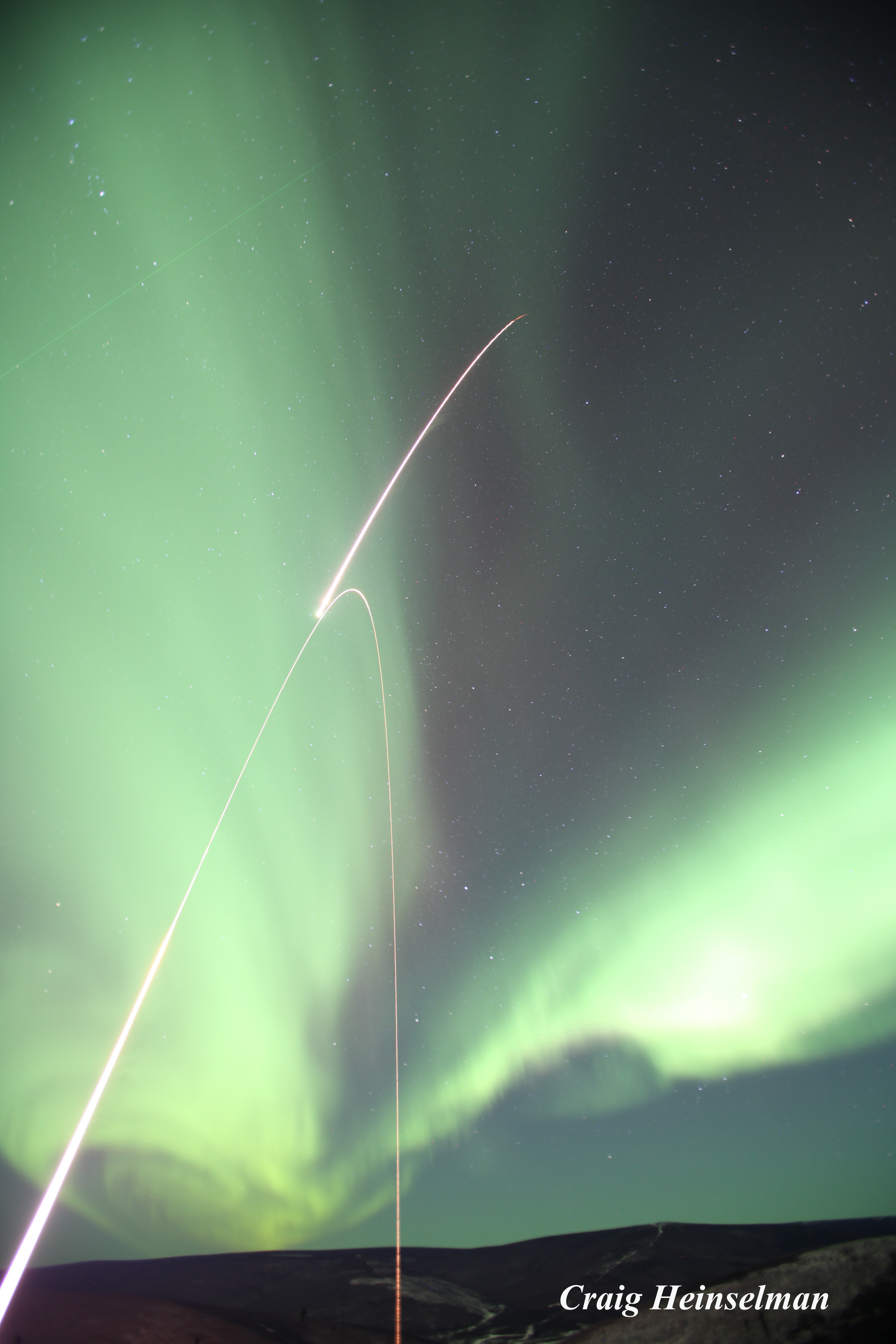
Here is a mapped movie of the aurora over the rocket trajectory by Don Hampton of UAF/GI)
18 February 2012
LAUNCHED!!!… much happiness. more tomorrow -k
17 February 2012
Another too-quiet night. We did bring the count down to 2 minutes for the last hour, but all the activity was up north at Kaktovik. The whole science team is now very practiced, we feel confident that we can catch any little aurora that dances its way across Ft Yukon…
Try again tomorrow…
16 February 2012
Nope, not tonight. This was the permutation involving clear skies, a happy rocket, good winds, and no aurora to speak of….
A correction to my note from last night….rockets are like iceboats in being steered in a backwards way. The fins are at the back, so a wind pushing the fins toward, say, the east, makes the rocket point west. So if the wind is blowing toward the east, you have to point the launcher farther east. Weird. (Thanks Meghan for pointing that out.)
15 February 2012
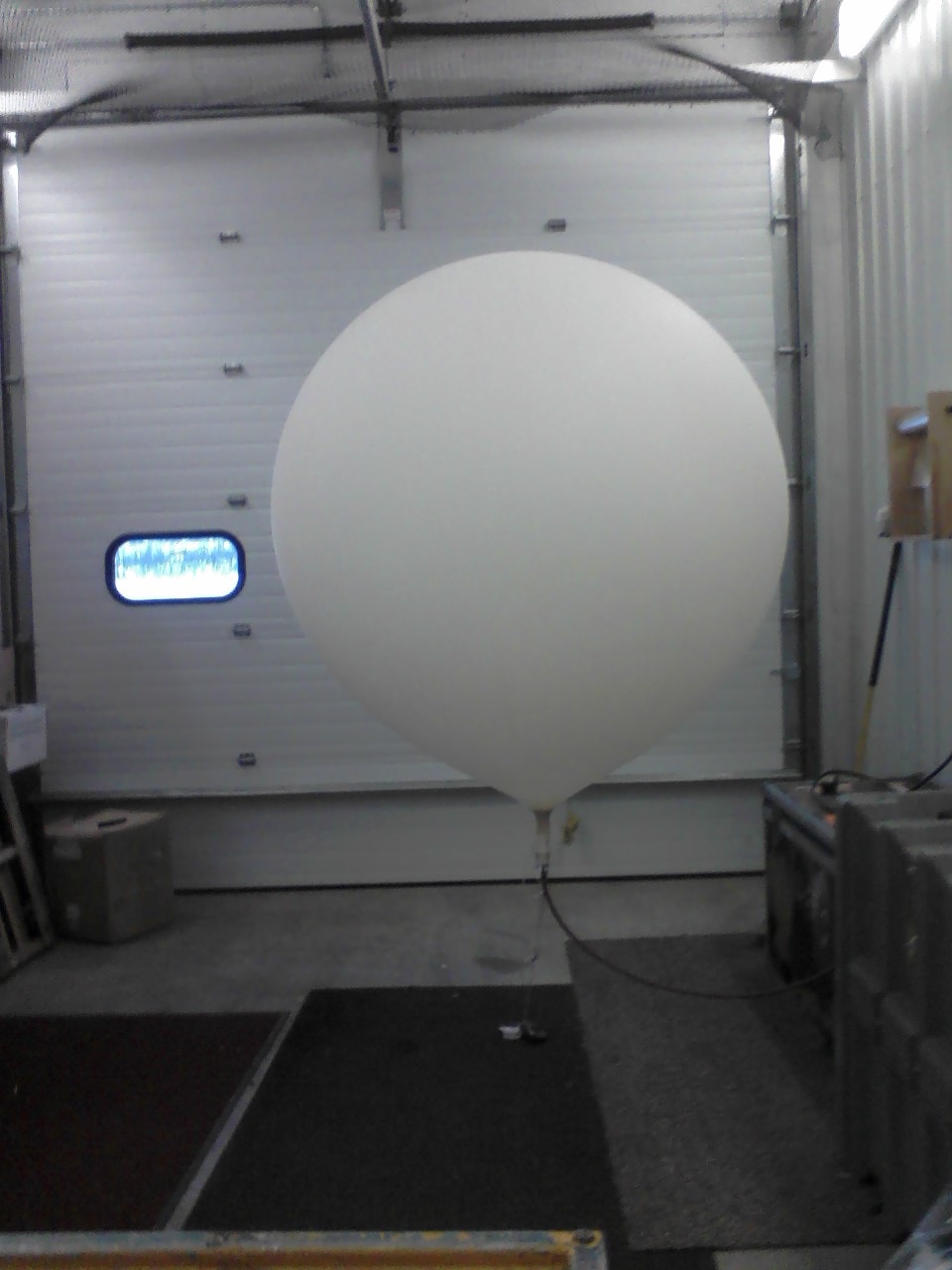
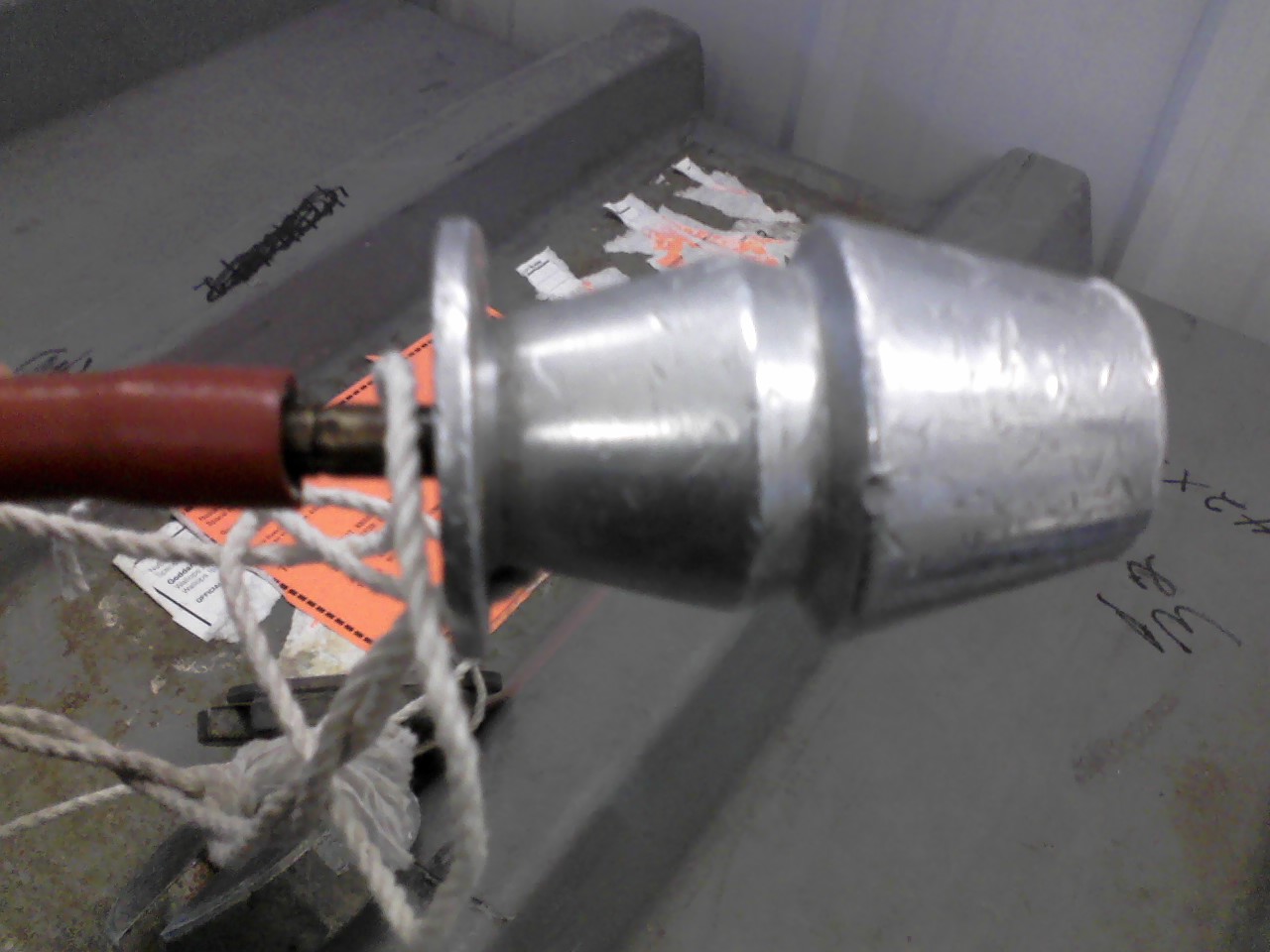
A quiet night, to make up for all the action last night. The auroral activity was very quiet, and also hidden behind clouds at all three of our optical sites. I went to visit the balloon facility; the “balloon woman”, Darla, who launched 75 bazillion balloons during our last rocket campaign, is back at work filling and launching balloons. The balloons are used to monitor the wind conditions; each one carries a little sounder and provides an altitude trace of the winds. These are used to correct the launcher settings; ie if the winds are strongly pushing the rocket to the west, we point the rocket on the launcher a little east to compensate. For the GreenCubers, here are some detailed pictures of Darla’s valve system for easily and with just one person, filling many balloons each night.
Hoping for more activity and clearer skies tomorrow night.
14 February 2012
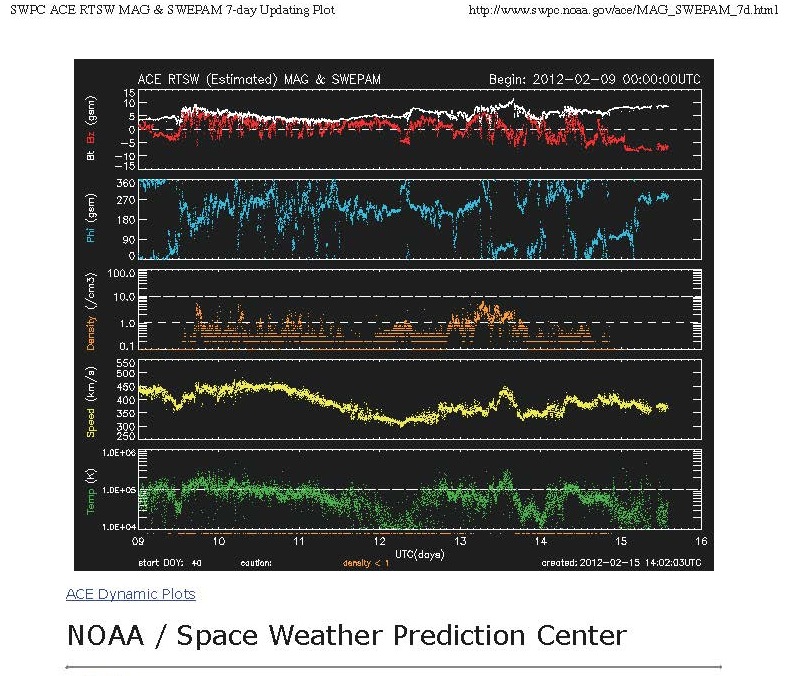
|
No launch tonight, but not for lack of trying. We were on our toes (and sitting at a 2-minute hold) for almost all of our 6 hour window which was extended to a 6.5 hour window. For those of you who have followed these windows before, the solar wind magnetic field was southward (ie a good energy transfer to the Earth’s environment) for over 16 hours straight. I’ve never seen that before. So we learned a lot, but we’re still here. Bodes well for activity levels this winter though. 13 February 2012 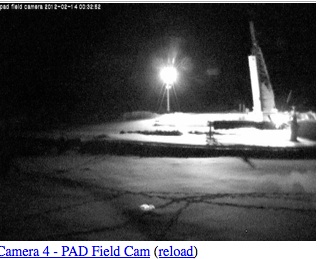 We are on the rail and the rail is vertical! Always a nice hurdle to pass. The payload is encased in a styrofoam box (which is built up around it) so that warm air can be pumped up through it while it is exposed on the rail. (The payload launches right through the styrofoam, the fins break it apart as the payload moves up the rail.) So the latticework looking thing to the right of the white rectangle is the launch rail; it can fold down horizontally to the left and then there is a housing which can slide over to cover it during buildup. The white rectangle is the boxed payload. This one is a two-stage motor, and the rail can hold a 4-stage motor, that’s why the rocket is short compared to the rail. We are keeping the altitude and range of this mission shorter than normal so that we can fly within the range of the scientific radar facility here at Poker, PFISR. 12 February 2012 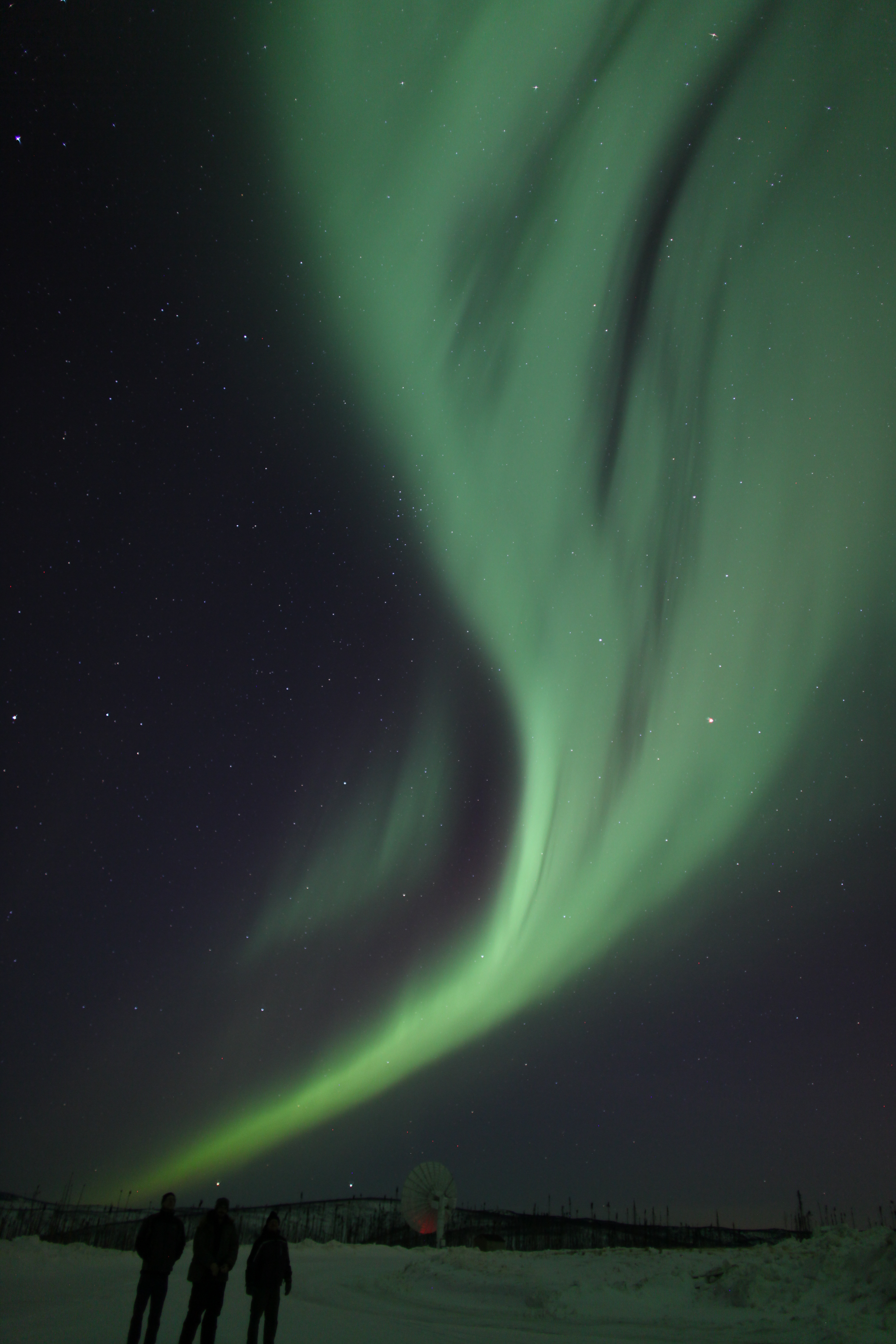 Tonight the science team has had the range to themselves, to watch the aurora and set up cameras, diagnostics, and displays. The engineering and range staff have a mandatory day off before the window opens Monday evening. The photos show some of the nice aurora we have seen tonight (photos by Craig Heinselman); some impressive but confusing displays. Monday night is the official opening of the window; there are still some final buildup tasks left but we hope for good weather, good rocket, and good aurora. 11 February 2012 Greetings from the Poker Flat Research Range, 30 Mile Steese Highway…30 miles north of Fairbanks Alaska. The rocket is on the rail, the nose is on the rocket, the instruments are under the nose…now we need the aurora. The pictures show the payload getting its nose put on in the payload assembly building; the data displays in the telemetry building; and the lovely colors of an arctic sunset as seen from the middle of the rocket range. I flew north from Seattle Friday afternoon; the flight up the coast of Alaska is spectacularly beautiful. Every view from each window is an abstract high-detail photograph by Ansel Adams or Eliot Porter. When the first part of the team came up here two weeks ago, it was 50 degrees below zero. Fortunately that weather has abated; it is very mild and it would better if it were colder, as it is somewhat cloudy. Tonight and tomorrow night the science team is assembled at the range hoping for some aurora to practice with; we have our main group here at Poker; a second group running cameras at Fort Yukon to the north; and yet another person at a tiny town called Venetie setting up cameras directly under the planned apogee of the rocket. But right now the Sun is very quiet; we are hoping that it knows we need it to be active later this week so is saving its energies for then. -K |
